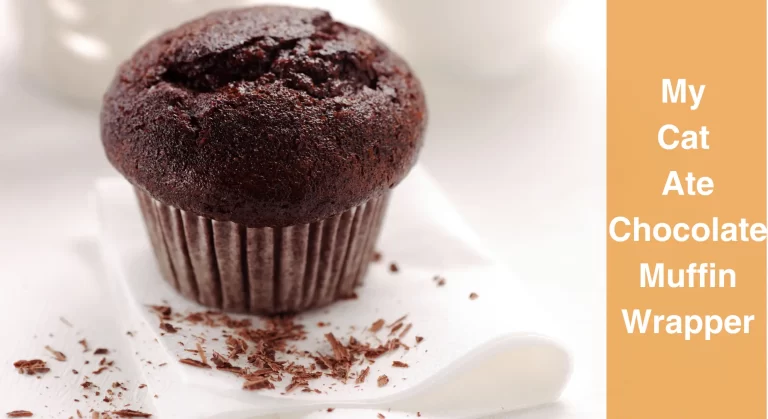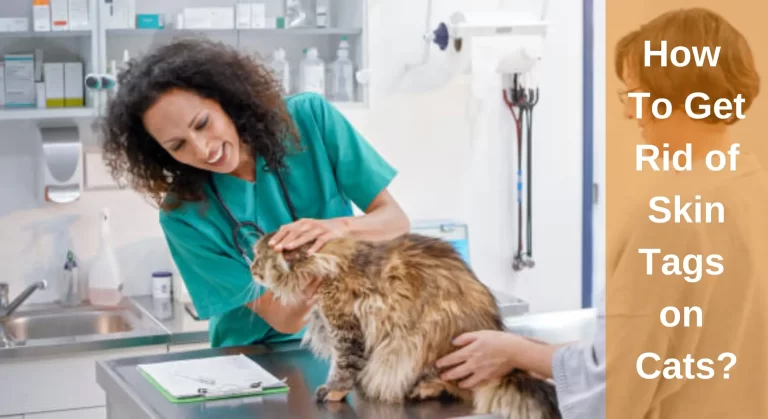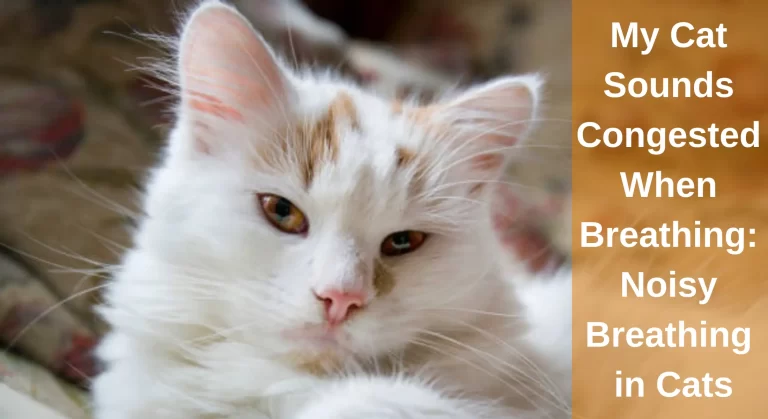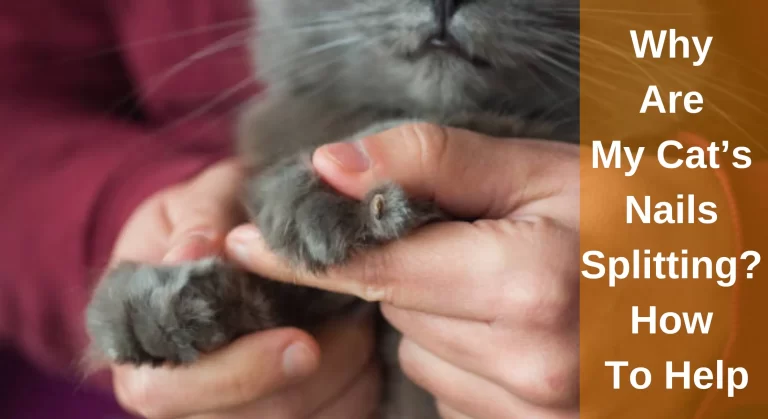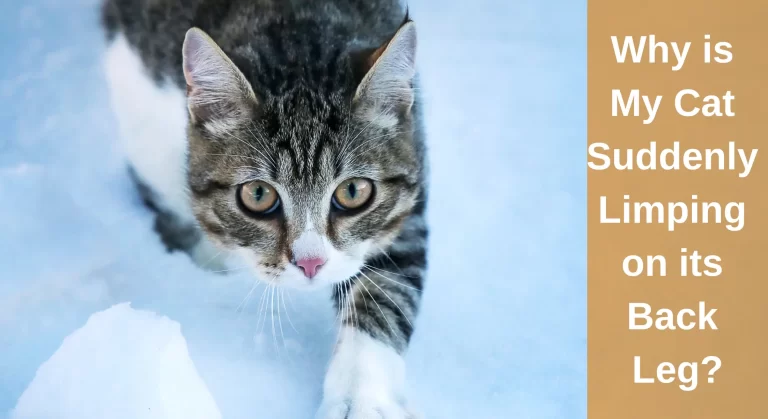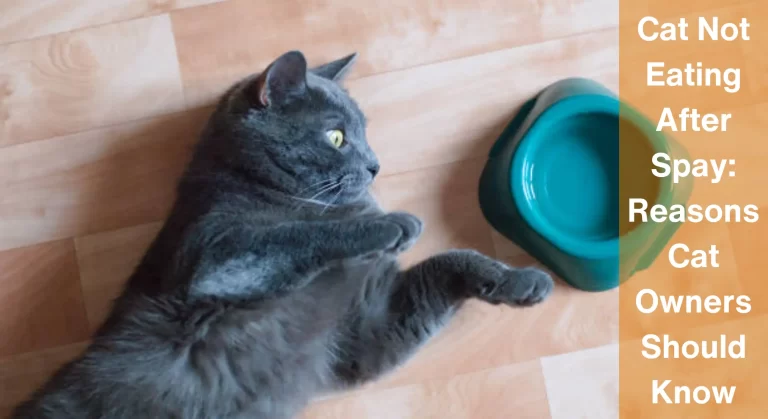How to Keep Cat Litter Off the Floor? [Asnwered]
If you are a cat owner, you know how difficult it can be to keep cat litter off the floor. No matter how careful you are, you always seem to find litter scattered around your home. Cat litter tracking happens when your feline friend moves tiny pieces of litter components around your house.
It’s not especially nice, and if it gets in your shoes or gets on your feet, it may even cause pain. This can be frustrating and even embarrassing when guests come over. The litter may also fly over the side of the box and be readily walked across the house if your cat enjoys scratching or digging in the litter box to hide its waste. So, how to keep cat litter off the floor?
To keep cat litter off the floor, you can try using a litter mat outside the litter box, placing the box on a tray or in a larger container, and sweeping or vacuuming around the box regularly. Place the litter box in a quiet area and consider using a litter box with higher sides to prevent litter from being kicked out. Additionally, consider switching to a low-tracking litter and Regular grooming of your cat’s paws and fur can also help reduce the amount of litter that gets tracked around the house.
In this article, we’ll go over some tips and tricks for keeping cat litter off the floor and ensuring a clean and hygienic living space for both you and your feline companion.
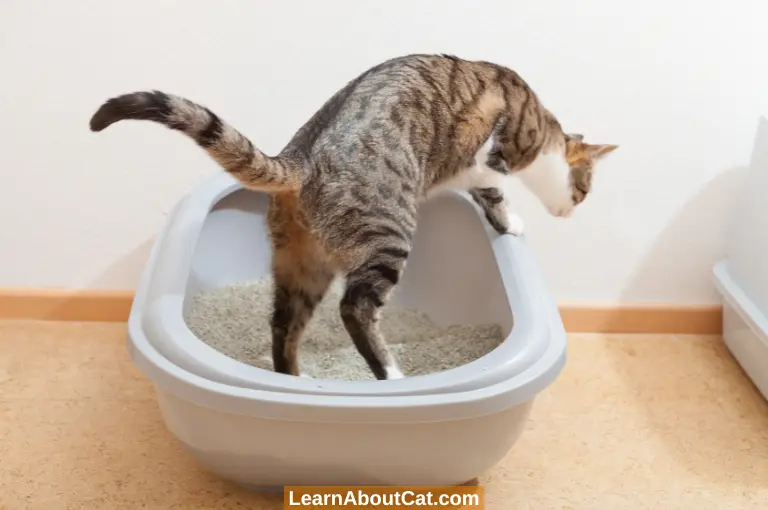
What Causes Cat Litter Tracking?
Being a cat owner is a blessing in many ways since cats are often very clean creatures, and it’s wonderful that they only go potty in one area of your house.
Cat litter tracking can be caused by several factors, including the type of litter used, the size and depth of the litter box, and your cat’s behaviour when using the box.
Certain types of litter, such as lightweight or dusty litter, are more prone to track as they can easily cling to your cat’s paws and fur. Similarly, if the litter box is too shallow or small for your cat, it may have difficulty manoeuvring around and end up kicking litter out of the box.
In addition, some cats have a habit of digging vigorously in the litter box, which can cause litter to scatter outside of the box. This can be especially common in cats that are stressed, anxious, or have a high energy level.
How Can I Stop My Cat From Littering on The Floor?
By taking a few easy steps, cat litter tracking may be stopped or significantly reduced. Before reading more about how to avoid trailing cat litter in the section below, take into account the following advice:
- Think about the garbage you chose.
- Keep the litter box inside and away from crowded places.
- Buy a litter box with high sides.
- More often, keep the space surrounding the litter box clean.
- Use specialised litter mats to keep the litter off of your cat’s paws.
There are many benefits to owning a cat, and chances are you appreciate your feline friend very much. The discovery of annoying cat litter bits all around your home is one of the unfavourable side effects, though.
Even if you buy the nicest cat litter money can buy, it’s still possible that some of it may end up on your floor, particularly if you have a cat that loves playing in it and digging up a storm, as some do.
Interesting Reading: The Ultimate Guide to How to Get Rid of Cat Pee Smell
How to Keep Cat Litter Off the Floor
If you want to make sure that your cat’s waste stays in the litter box, where it belongs, here is further information about the previously given recommendations.
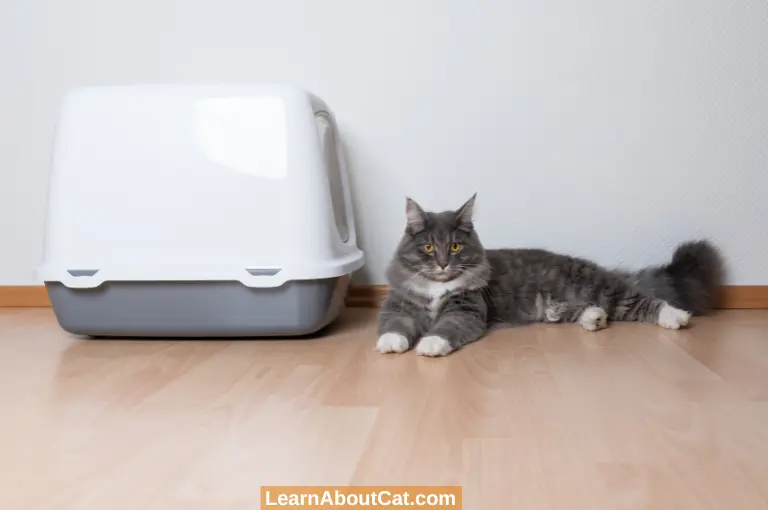
1. Type of Litter
A lot of cats have preferences for particular types of cat litter, and they won’t use it if you don’t have any of those types on hand.
You probably already know what your cat prefers if you’ve kept them for a time. However, you might want to think about switching to a brand that is made to minimise monitoring if it is starting to bother you.
2. Unique Litter Mats
Another quick and simple way to avoid litter from tracking is to use litter tray mats. In this case, it’s crucial to make sure the mat is both large enough for the cat to step over it and rough enough to take the litter off the cat’s paw.
Standard rugs and mats can be utilised, however, they typically function better when manufactured specifically for this purpose. There are also two-layered mats that may catch waste below for easy disposal.
3. Regular Cleaning
Keeping the litter box clean is crucial for preventing litter scatter and ensuring a hygienic living space for you and your cat
Go by the cat’s litter box a few times a day to sweep up any debris that may have found its way onto the floor in an effort to maintain the area as clear as you can.
A dustpan and brush should be kept beside the tray for quick cleanups. You could even use a compact, carry-on vacuum if you’d like. Sweep the area beneath the litter box every week or so to get rid of any debris that has gathered there.
4. Proper Litter Box Placement
Proper litter box placement is also essential in preventing litter from getting on your floor. You have to aim to place the litter box away from any areas of your house that are thought to see a lot of activity, away from their food and water dishes.
Additionally, it’s important to place the litter box in an area that is easily accessible for your cat. If your cat has to climb stairs or navigate narrow hallways to get to their litter box, they may be more likely to have accidents outside the box.
Your cat also enjoys being alone, so the best place for it to live is in a secluded area where you can put the litter box, such as a basement bathroom.
5. Restrict the Tray
Another method to prevent litter from escaping is to in any way restrict the litter tray. This may be accomplished by placing it in an alternative, bigger tray or box that, ideally, would capture the majority of the litter particles to prevent them from ending up on the floor.
Also, Check Out: Can Cat Urine Cause Headaches?
6. Training Your Cat
Properly training your cat to use the litter box can also help prevent litter from getting on your floor.
Start by placing your cat in the litter box as soon as you bring them home, and reward them with treats or praise when they use it correctly.
If your cat has accidents outside the box, clean them up immediately and avoid punishing your cat, as punishing them can make the problem worse. Instead, try providing them with a larger litter box or a different type of litter.
Select the Appropriate Litter Box
When you feel overwhelmed by the litter on your floor, check the litter box you’re currently using. Although they are often utilised, open-sided boxes do the worst job of keeping the litter inside.
Even though this fashion is frequently the least expensive, overshoot cannot be prevented because of the low edges.
Thankfully, there are a few other kinds of litter boxes that can help you find a solution to this problem. Let’s examine each one in more detail.
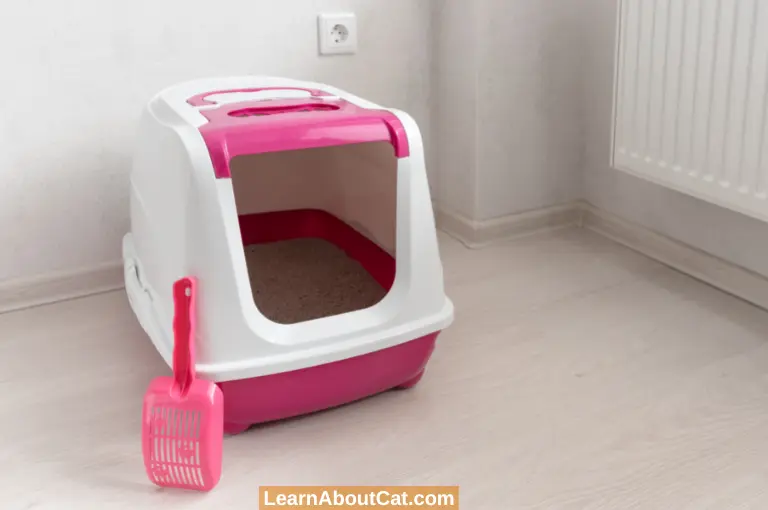
1. Top Entry Litter Box
One of the most common designs is a top entry litter box, so let’s start there. This has been shown to be the most effective way to contain litter, making it perfect for cats that drag litter behind them as well as diggers and sprayers.
The shape of the tray ensures that any garbage tossed into it will just strike its sides and fall back in. The majority of these containers feature a distinctive lid that will mostly gather dust and garbage.
2. A Ramp-Equipped Dumpster
Another choice and remedy for the problem of trailing cat litter are litter boxes with a slope. By capturing the crumbs that your cat tosses up as it leaves the tray, the ramp stops litter tracking.
When it is possible, use a litter box with high sides to further assist contain any mess. Additionally, you may buy a variety of litter boxes with ramps.
3. Automatic Garbage Can
For a filthy cat, a self-cleaning litter box is a fantastic alternative. Automated litter boxes are quite successful at minimising the quantity of litter you’ll see on your floor while being rather expensive.
You might want to consider an automatic litter box if a top entrance one didn’t work since your cat was kicking and kicking litter all over the house.
4. Integrated Trackpad
There are various litter boxes with built-in trackpads for cats who leave litter all over the place. When your cat exits the litter box, these, like the ramp or top-entry versions, capture litter particles from their paws.
But hooded litter boxes are furthermore offered. These litter boxes include a front entrance and a designated pad just outside the door.
Before leaving the litter box, the cat must walk on the pad with the gripping material applied to it in order to remove any litter from her paws.
You Might Also Like to Read This: How To Train a Cat to Use a Litter Box?
Utilise the Proper Cat Litter – Litter Tracking
The quantity of mess made will also be greatly influenced by the cat litter you choose. All forms of fine, small-particle litter have a higher propensity to leave the box and adhere to the cat’s paws and fur.
However, there are some types of rubbish that will lessen the monitoring and make your job easier. The greatest types of litter for reducing mess are listed below.
1. Clay waste – Dust-Free Litter
Silica litter is the best cat litter for small spaces since it almost eliminates litter tracking. This sort quickly absorbs smells and is made of silica crystals of various sizes.
Dust is seldom ever-present and has a far lower likelihood of adhering to the cat’s hair or paws. The price of this cat litter, however, is among the highest available.
2. Wood Pellet Litter
Due to their smooth surface, large wood pellets are a much better choice than clay. Their size makes them less likely to become tangled in your cat’s fur and spread throughout the house.
Additionally much healthier for the environment and is composed of natural materials, wood pellet cat litter. When urinated on, these pellets will gradually decompose into sawdust, so they won’t stay huge and smooth indefinitely.
Because of this, you shouldn’t assume totally dust-free environments and litter box cleaning may take longer.
Also Read: Are Pine Pellets Safe for Cats? Things You Need To Know
3. High-Sided Box, Self-Cleaning Litter Pans
The majority of high-sided litter boxes feature a top opening so cats may leap out after using it instead of a front entrance they can’t get back into.
Even while the best self-cleaning litter boxes might cost a bit more than standard litter trays, they can save you a tonne of headaches and time. You could also consider making this investment.
4. Paper Pellets
They cannot be moved around the house easily and are dust-free. The difficulty of cleaning and non-clumping this litter makes daily scooping laborious.
Most owners aren’t happy with how well it works, so they try alternatives that are simpler to clean.
5. Clay waste That Accumulates Rapidly
Owners favour clay because it is the most often used type of litter since it is affordable. But, owing to its high dust content, it’s one of the worst when it comes to messiness.
If you want to keep using clay litter, choose one that clumps quickly. This kind clumps much more rapidly and is less likely to end up on the paws or in the fur.
Frequently Asked Questions
How often should I clean my cat’s litter box?
Ideally, you should scoop the litter box at least once a day to remove waste and prevent litter from becoming too saturated. You should also deep-clean the box once a week to remove any remaining odors and keep it fresh.
How can I clean the litter box without spreading litter around?
Use a litter scoop to remove solid waste and clumps, and dispose of them in a trash bag. When cleaning the litter box, use proper techniques to minimize the spread of litter, such as washing the box with warm water and mild soap, and allowing it to dry completely before adding fresh litter.
Can I use a litter box liner to prevent litter scatter?
While a litter box liner can help contain litter, it may also make it more difficult for your cat to move around and dig comfortably. Some cats may even scratch or tear the liner, causing it to become ineffective. Consider experimenting with and without a liner to see what works best for your cat.
What should I do if my cat is still scattering litter despite my efforts?
If your cat is still scattering litter, it may be worth trying a larger or deeper litter box, or experimenting with different types of litter. Additionally, consider placing the litter box in a more secluded area of the house to reduce distractions and potential stressors.
Proper litter box cleaning techniques?
When cleaning the litter box, it’s important to use the proper techniques to minimize the spread of litter.
1. Use a litter scoop to remove solid waste and clumps, and dispose of them in a trash bag.
2. Avoid flushing litter down the toilet, as this can cause plumbing problems.
3. To clean the litter box, start by emptying the old litter into a trash bag.
4. Then, wash the box with warm water and mild soap, and rinse thoroughly.
5. Allow the box to dry completely before adding fresh litter.
Wrap Up!
Preventing litter scatter may require some trial and error, but the good news is that you can significantly reduce your litter mess by following these tips, you can maintain a clean and hygienic living space for both you and your cat.
Remember to choose the right litter box and litter type, next, find a litter that doesn’t track as much and stays inside the box. Don’t forget to put a high-quality litter mat underneath the box, groom your cat regularly, and encourage proper litter box behaviour.
Last but not least, every cat owner has to commit to routine cleaning and vacuuming. With a little patience and persistence, you can keep cat litter off the floor and enjoy a tidy home.
Related Posts:
Who is Isabella?
My name is Isabella, and I am a dedicated and knowledgeable cat enthusiast. With years of experience caring for cats and a deep love for felines, I made a mission to help other cat lovers navigate the challenges of cat ownership.

